

Page 2 - Dispatches From Direct To DVD Purgatory - Pop culture news, movie, TV, music and gaming reviews. The Soap Bubble Trope - JSTOR Daily. What do the roof of the Munich Olympic Stadium, Glinda the Good Witch, Disney’s Cinderella, the art series “Unweave a Rainbow” by neo-surrealist painter Ariana Papademetropoulos, Sir Isaac Newton, the first “viral” ad campaign of the late Victorian era, and morose Dutch still-life paintings have in common?
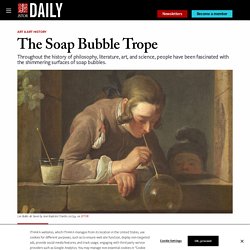
Thread by @dkedrosky on Thread Reader App. 130 views Glass: the most underrated medieval technology?
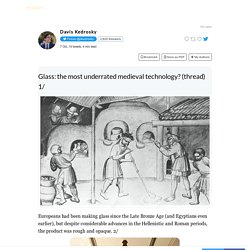
(thread) 1/ Europeans had been making glass since the Late Bronze Age (and Egyptians even earlier), but despite considerable advances in the Hellenistic and Roman periods, the product was rough and opaque. 2/ During the 13th century, however, Venetian glassmakers on the island of Murano—where they had been confined by the city's government to prevent the spread of fires and trade secrets—discovered new techniques for making a durable and transparent product. 3/ Murano glass was the product of economic and geographical circumstance.
The Murano glassmakers ruled the industry for three centuries, shipping everything from windowpanes to dinnerware across Europe, and by 1581 there were 28 furnaces on the island. Venice sought desperately to keep its monopoly. But European states were determined to set up luxury glass industries and lured away Venetian glassmakers to train their own artisans. Venice's loss was Europe's gain. 3D Printers Make Incredible Pastas Your Nonna Could Only Dream About. If you could make anything out of pasta, what would it be?
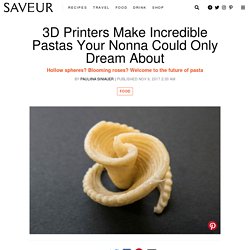
A miniature of your cat? Edible post-it notes? Liminal Space Iceberg. TheoJunior. ‘Beneath the Surface: Life, Death, and Gold in Ancient Panama’ opens at the Penn Museum in Philadelphia. © Panama, Cocle Expedition – J.
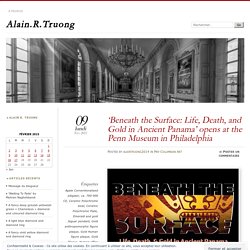
Alden Mason / Penn Museum / Penn Museum Photo Studios / Museo Chileno de Arte Precolombino. Kevin Lenaghan; “Stairway”, “Glass Palace”, and “Crystal Stairway” (2021) Alexander Reben. Map of the Internet — Halcyon Maps. Introduction to spaceblooms. Spaceblooms emerged at the end of a remarkably long period of unprecedented growth in human knowledge.
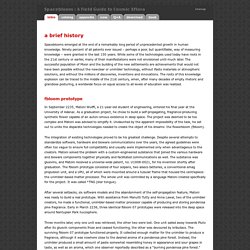
Ninety percent of all patents ever issued – perhaps a poor, but quantifiable, way of measuring knowledge – were granted in the last 150 years. While some of the technologies used today have roots in the 21st century or earlier, many of their manifestations were not envisioned until much later. (what is this?): Blood and Sawdust. In contrast with today's vogueish marketing gestures of reuse, recycling and boutique "upcycling", 19th century society appears to have understood reclamation as a stage of production.

According to Susan Strasser, Richards Professor of American History at the University of Delaware and author of Waste and Want: A Social History of Trash, “The 19th century world regarded reusing materials as a matter of common sense, of stewardship of material goods.” Used goods— metal, cloth, glass — if they were discarded at all, were retrieved by peddlers or scavengers and turned into new goods.
Much more so than simply rendering horses at the glue factory, 19th century society was almost perversely adept at recycling. The Jesus Mysteries Orpheus Amulet. Introduction The Jesus Mysteries by Timothy Freke and Peter Gandy was first published in 1999 in the UK and soon received a US imprint as well.
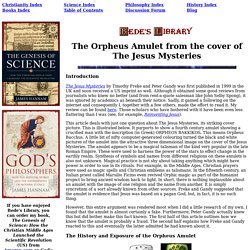
Although it obtained some good reviews from journalists who knew no better (and from rent-a-quote salesman like John Selby Spong), it was ignored by academics as beneath their notice. Sadly, it gained a following on the internet and consequently I, together with a few others, made the effort to read it. My review can be found here. Those scholars who have bothered with it have been even less flattering than I was (see, for example, Reinventing Jesus). This article deals with just one question about The Jesus Mysteries, its striking cover picture. Cracking the Code of James Hampton's Private Language. After the sun went down and the streetlights woke up, God visited James Hampton.

Not just once, but often. Moses appeared to him in 1931, the Virgin Mary in 1946, and then Adam on the day of Truman’s inauguration in 1949. Leonora Carrington. Painting is a need, not a choice [1], said the legendary painter and novelist Leonora Carrington, who managed to completely redefine female symbolism through her own interpretation of surrealism.

She was a restless and prolific artist throughout her career – she worked in oil painting, bronze and cast iron sculpture, but also mixed-media pieces that combined wood, glass, and various iron objects. Talchum. Talchum (탈춤) or t'alch'um could be characterized as a Korean dance performed while wearing a mask, mimicry, miming, speaking and even sometimes singing.

Although the term talchum is usually taken to mean all mask dance dramas by most Koreans, it is strictly speaking a regional term originally only properly applied to dances of Hwanghae Province in present-day North Korea. Dances from the Seoul or Gyeonggi Province region are known as sandae noli, whereas the dances from the southern coast are known as yayu(야유) which means field play or Obangsinjang which means dance of five gods. However, Talchum is nowadays accepted as a general term for mask dance drama.[1] Korean mask dance dramas are not just dances performed by masked dancers but also include significant dramatic content with masked characters portraying people, animals and sometimes supernatural beings.
History[edit] Themes and characteristics[edit] Procedure[edit] 'Sistine Chapel Of The Ancients' Rock Art Found Deep In Amazon Jungle. Ella Al-ShamahiThe discovery will be aired as part of a documentary series in December. Archaeologists have discovered tens of thousands of ancient paintings dating back some 12,500 years in the Colombian jungle. These prehistoric depictions of animals and humans were found adorning cliff faces that stretch across nearly eight miles. On top of that, some depict long-extinct ice age animals. Les reliquaires du diaphane, 2016 - Laurent Millet. Published in the editorial work on polyhedrons by the 16th century famous goldsmith of Nuremberg Wenzel Jamnitzer, these erudite and complex shapes are pedestals that the author shows to present mathematical objects like sculptures.
These pedestals partly resume the formal vocabulary of mathematical objects and partly the ornemental spirit of the manerist shapes. They both have the trivial function to support an object, and the abstract origins of the most exact science and also of the freest and most useless architectures of their times: these pavilions that begin to adorn the Renaissance gardens, as Francesco Colonna in his Hypnerotomachia Poliphili, describe them in a way that will inspire generations of architects and landscapers. Helvetesskåpet - specialeffekter från år 1800. Survey of Alternative Displays. Infinity Mirror Rooms Share Yayoi Kusama's Visions. Orrery, 1979 - Kit Williams. The lost world of Aocicinori, circa 1960. John Vernon Lord. Reptangle - Windstone Editions. Remedios Varo - 112 artworks. MICHAEL WHELAN: Archive. David Camp Spiritual Art. Click on banners below to open gallery page links for this project. Thumbnails within each gallery lead to expanded images in a 3rd window.
If you leave the 3rd window or tab open and toggle, you can retain viewed images. Original Paintings. MetaTalktail Hour: Box art, take me away. Did you ever feel transported by an image? Some things (games, books, music albums, ...toys, cereals, ...) have cover art that can draw you into its world with a single image, even if the product then didn't really live up. The Mesmerizing Geometry of Malaysia's Most Complex Cakes. Encyclopedia of Rainbows Book Captures Rainbows in Nature. Butterflies Self-described as “an artist who could never pick a favorite color,” Julie Seabrook Ream is known for her kaleidoscopic arrangements of everyday objects. A Roman 'ribbon glass cup', probably made Italy in about 25 BC-50 AD. Young Decadent - Tania Brassesco & Lazlo Passi Norberto - Expectations 2010 - Opera Celeste Network. Remake of "Young Decadent (After the Ball)", Ramon Casas - 1899. Link alll'opera originale: L'opera fa parte del progetto fotografico "THE ESSENCE OF DECADENCE - La fotografia interpreta la pittura del Decadentismo".
Le opere, frutto di un paziente studio alla ricerca di un tempo perduto, rivelano il “panico per l’inevitabile inganno che irretisce la nostra vita, la rovinosa totale caduta in questa terribile condizione” (Auerbach) che si rinnova nel silenzio degli scatti contemporanei. In which the Gallo-Roman Dodecahedra are used for knitting : badhistory. The Myth of Whiteness in Classical Sculpture. Aphrodisias was home to a thriving cadre of high-end artists until the seventh century A.D., when an earthquake caused it to fall into ruin. In 1961, archeologists began systematically excavating the city, storing thousands of sculptural fragments in depots.